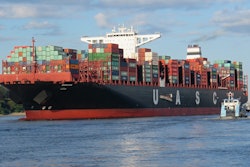
The Army Corps of Engineers has released to the public the details of its fiscal year 2020 “Work Plan” and the lower Mississippi River deepening project was included on the list.
The 256-mile stretch of the Mississippi River from Baton Rouge, LA, to the Gulf of Mexico accounts for 60% of U.S. soybean exports, along with 59% of corn exports -– by far the leading export region for both commodities.
Soybean farmers and a large number of Mississippi River stakeholders are promoting the dredging of the lower river shipping channel from 45 ft. to 50 ft. in depth.
Project Description: Deepening the Lower Mississippi River from 45 ft. to 50 ft.
The overall project is estimated to cost $245 million and would occur in three phases. Two of the phases will be cost-shared between the federal government (75%) and non-federal sources (25%). The State of Louisiana has been designated as the obligated non-federal entity.
Dredging from Venice, Louisiana (approximately Mile 10 Above Head of Passes [AHP]) to the Gulf of Mexico. Removing this bottleneck would provide a 50-ft. deep channel to approximately Mile 154 [AHP] of the river. A substantial number of soybean and grain export terminals are located within this portion of the river. The estimated cost of this phase is $100 million. Given a 75% federal and a 25% non-federal cost share, the federal obligation would be $75 million, and the non-federal obligation would be $25 million.
Dredging from Mile 154 AHP to Baton Rouge, Louisiana (Mile 232 AHP). The remaining soybean and grain export terminals would be included in the 50-ft. shipping channel upon completion of this phase. The estimated cost of this phase is $65 million. Given a 75% federal and a 25% non-federal cost share, the federal obligation would be $48.75 million, and the non-federal obligation would be $16.25 million.
The relocation of pipelines buried under the northern portion of the shipping channel. The estimated $80 million cost of doing so would be split evenly between the State of Louisiana and the pipeline owners.
Activating the Project: U.S. Soybean Farmers Strategically Invest $2 million
In July 2019, the United Soybean Board (USB) announced a $2 million allocation to help offset the planning, design, and research costs of deepening the lower Mississippi River from 45 ft. to 50 ft. The $2 million in USB funding is to be combined with approximately $21 million in federal funding and $7.5 million in funding from the State of Louisiana to initiate the first year’s work of the project (i.e. commencing the deepening of the river from Venice, Louisiana, to the Gulf of Mexico). While the State of Louisiana has provided its initial $7.5 million allocation of matching funds, the federal government has yet to approve its approximately $21 million in initial funding.
Benefit to US Soybean Farmers: $461 million of Additional Annual Revenue
Recent research conducted by the Soy Transportation Coalition (STC) concludes that shipping costs for soybeans from Mississippi Gulf export terminals would decline 13 cents per bushel ($5 per metric ton) if the lower Mississippi River is dredged to 50 ft. A deeper river will allow both larger ships to be utilized and current ships being utilized to be loaded with more revenue-producing freight. Average vessel loads will increase from 2.4 million bushels of soybeans (66,000 metric tons) to 2.9 million bushels (78,000 metric tons) – an increase of 500,000 bushels or a 21% increase.
The research also identifies the impact on interior basis –- the difference between the local price a farmer receives and the market value established by the Chicago Board of Trade – for soybeans in 31 states if the lower Mississippi River shipping channel is dredged. It is well established that farmers located in closer proximity to the nation’s inland waterways and barge transportation enjoy a positive or less negative basis vs. soybeans grown in areas further removed. As a rule, the less-costly and more efficient the supply chain is subsequent to farmers delivering their soybeans, the higher value a farmer will receive for the bushels of soybeans produced.
According to Soy Transportation Coalition research, states enjoying positive or slightly negative basis will expand if the lower Mississippi River is dredged to 50 ft. The areas with more pronounced negative basis will be crowded out by more favorable basis territory.
The STC research estimates farmers in the 31 evaluated states will annually receive an additional $461 million for their soybeans due to dredging the lower Mississippi River to 50 ft. While those states located in close proximity to the inland waterway system will realize the most benefit, states further removed will also benefit from the increased modal competition between rail and barge.
When modal competition increases, a downward pressure on shipping rates will often occur.
With barge transportation becoming more viable for a larger percentage of the soybean-producing areas of the country, there will be a greater degree of overlap between areas served by railroads and barge.
Soybean shippers will benefit from this modal competition.


















